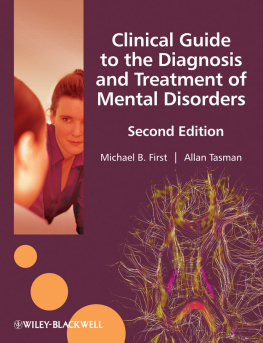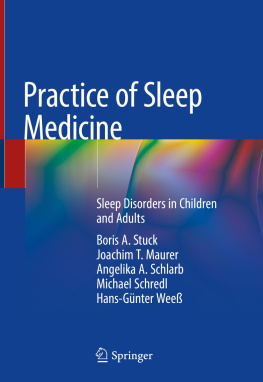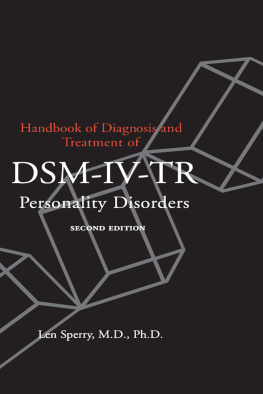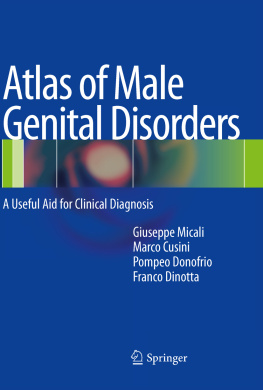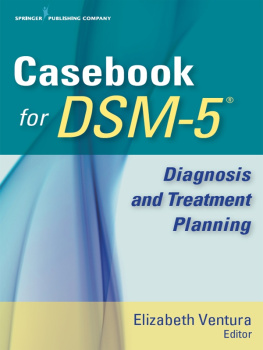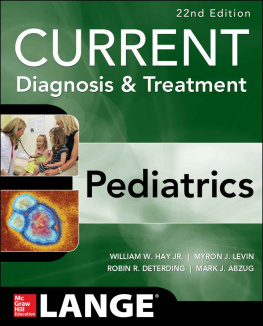This edition first published 2010
2010 John Wiley & Sons, Ltd
Wiley-Blackwell is an imprint of John Wiley & Sons, formed by the merger of Wileys global Scientific, Technical and Medical business with Blackwell Publishing.
Registered office: John Wiley & Sons Ltd, The Atrium, Southern Gate, Chichester, West Sussex, PO19 8SQ, UK
Other Editorial Offices:
9600 Garsington Road, Oxford, OX4 2DQ, UK
111 River Street, Hoboken, NJ 070305774, USA
For details of our global editorial offices, for customer services and for information about how to apply for permission to reuse the copyright material in this book please see our website at www.wiley.com/wiley-blackwell
The right of the author to be identified as the author of this work has been asserted in accordance with the Copyright, Designs and Patents Act 1988.
All rights reserved. No part of this publication may be reproduced, stored in a retrieval system, or transmitted, in any form or by any means, electronic, mechanical, photocopying, recording or otherwise, except as permitted by the UK Copyright, Designs and Patents Act 1988, without the prior permission of the publisher.
Wiley also publishes its books in a variety of electronic formats. Some content that appears in print may not be available in electronic books.
Designations used by companies to distinguish their products are often claimed as trademarks. All brand names and product names used in this book are trade names, service marks, trademarks or registered trademarks of their respective owners. The publisher is not associated with any product or vendor mentioned in this book. This publication is designed to provide accurate and authoritative information in regard to the subject matter covered. It is sold on the understanding that the publisher is not engaged in rendering professional services. If professional advice or other expert assistance is required, the services of a competent professional should be sought.
The contents of this work are intended to further general scientific research, understanding, and discussion only and are not intended and should not be relied upon as recommending or promoting a specific method, diagnosis, or treatment by physicians for any particular patient. The publisher and the author make no representations or warranties with respect to the accuracy or completeness of the contents of this work and specifically disclaim all warranties, including without limitation any implied warranties of fitness for a particular purpose. In view of ongoing research, equipment modifications, changes in governmental regulations, and the constant flow of information relating to the use of medicines, equipment, and devices, the reader is urged to review and evaluate the information provided in the package insert or instructions for each medicine, equipment, or device for, among other things, any changes in the instructions or indication of usage and for added warnings and precautions. Readers should consult with a specialist where appropriate. The fact that an organization or Website is referred to in this work as a citation and/or a potential source of further information does not mean that the author or the publisher endorses the information the organization or Website may provide or recommendations it may make. Further, readers should be aware that Internet Websites listed in this work may have changed or disappeared between when this work was written and when it is read. No warranty may be created or extended by any promotional statements for this work. Neither the publisher nor the author shall be liable for any damages arising herefrom.
Library of Congress Cataloguing-in-Publication Data
Clinical guide to the diagnosis and treatment of mental disorders/[edited by] Michael B. First, Allan Tasman. 2nd ed.
p.; cm.
Includes bibliographical references and index.
ISBN 978-0-470-74520-5 (pbk)
1. Mental illness. 2. Psychiatry. I. First, Michael B., 1956- II. Tasman, Allan, 1947- [DNLM: 1. Mental Disordersdiagnosis. 2. Mental Disorderstherapy. WM 140 C6405 2009]
RC469.C555 2009
616.89-dc22
2009022473
ISBN: 9780470745205
To Leslee, my bashert
Michael
To my family with love and thanks for your support and inspiration
Allan
Preface
The publication of DSM-III in 1980 revolutionized psychiatry. Among its many accomplishments (e.g., increased diagnostic reliability), it provided a common language for naming, describing, and identifying the complete range of mental disorders seen in clinical practice, as well as an organizational plan embodied in the diagnostic groupings contained in the DSM-III classification (i.e., grouping together Organic Mental Disorders, Psychotic Disorders, Mood Disorder, Anxiety Disorders, etc.). Its appeal is several-fold: 1) it is authoritative: the information contained in the DSM is authored by the leading experts in psychiatry and psychology; 2) it is comprehensive: all disorders seen by mental health professionals practice are covered in the DSM; 3) it is clinically useful: material included in the DSM is intended to be of practical use in making psychiatric diagnoses; 4) it is educational: material is included also for the purpose of educating the reader about mental disorders, such as how they present, sex ratio, prevalence rates; and 5) it is relatively concise: all the information in contained in a single volume, of around 900 pages in length.
Although the DSM is indispensable in the evaluation and treatment of patients with mental disorders, arriving at a psychiatric diagnosis is only the first step in the process. Once the clinician determines the diagnosis, he or she must then choose from among a range of available treatment options. Certainly the biggest limitation of the DSM-IV-TR is its omission of any information about the management and treatment of psychiatric patients. DSM-IV-TR users must turn elsewhere for information about which treatment to chooseeither to books written specifically about the treatment of a disorder or books covering psychiatric treatment in general. In editing this book, Clinical Guide to the Diagnosis and Treatment of Mental Disorders, we have adapted material from the Disorders section of the two-volume textbook Psychiatry, 3rd Edition (edited by Tasman, Kay, Lieberman, First, and Maj) which was published in May 2008. Like its original source, it covers all of the disorders included the DSM-IV-TR but the content has been edited to meet the clinical needs of the readership. Rather than producing a reference book about mental disorders, we see this book as an accessible and brief clinical guide to diagnosis and treatment. As such, the Etiology sections from the original book have been eliminated and the Diagnosis and Treatment sections have been condensed with the goal of retaining only information which is clinically relevant. In addition, details of studies establishing the epidemiology of the disorders or the efficacy of treatments have been removed, as have all of the references. Readers interested in this information should refer to the corresponding chapters in the original book.
The organization of the chapters in this book closely parallels the layout of disorders in the DSM-IV-TR. The amount of space allocated to each disorder in this book varies according to clinical importance. Thus, unlike DSM-IV-TR, in which all of the anxiety disorders are covered in the same chapter, the book splits up the major anxiety disorders among several different chapters. Within each chapter, this book for the most part follows a consistent structure. The Diagnosis section for each disorder begins with introductory material describing the features of the disorder and includes information about assessment issues, comorbid conditions, course (which includes age at onset, prognosis and outcome), and differential diagnosis. The Treatment sections summarize the available treatments for the disorders, and often are broken down into Somatic Treatments and Psychosocial Treatments for ease of reference.

